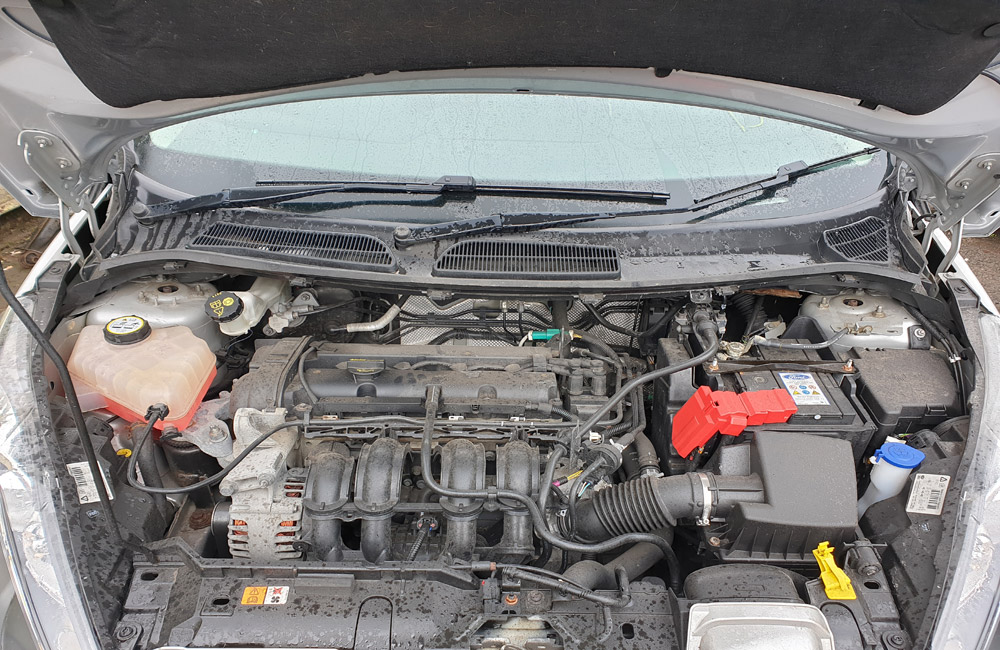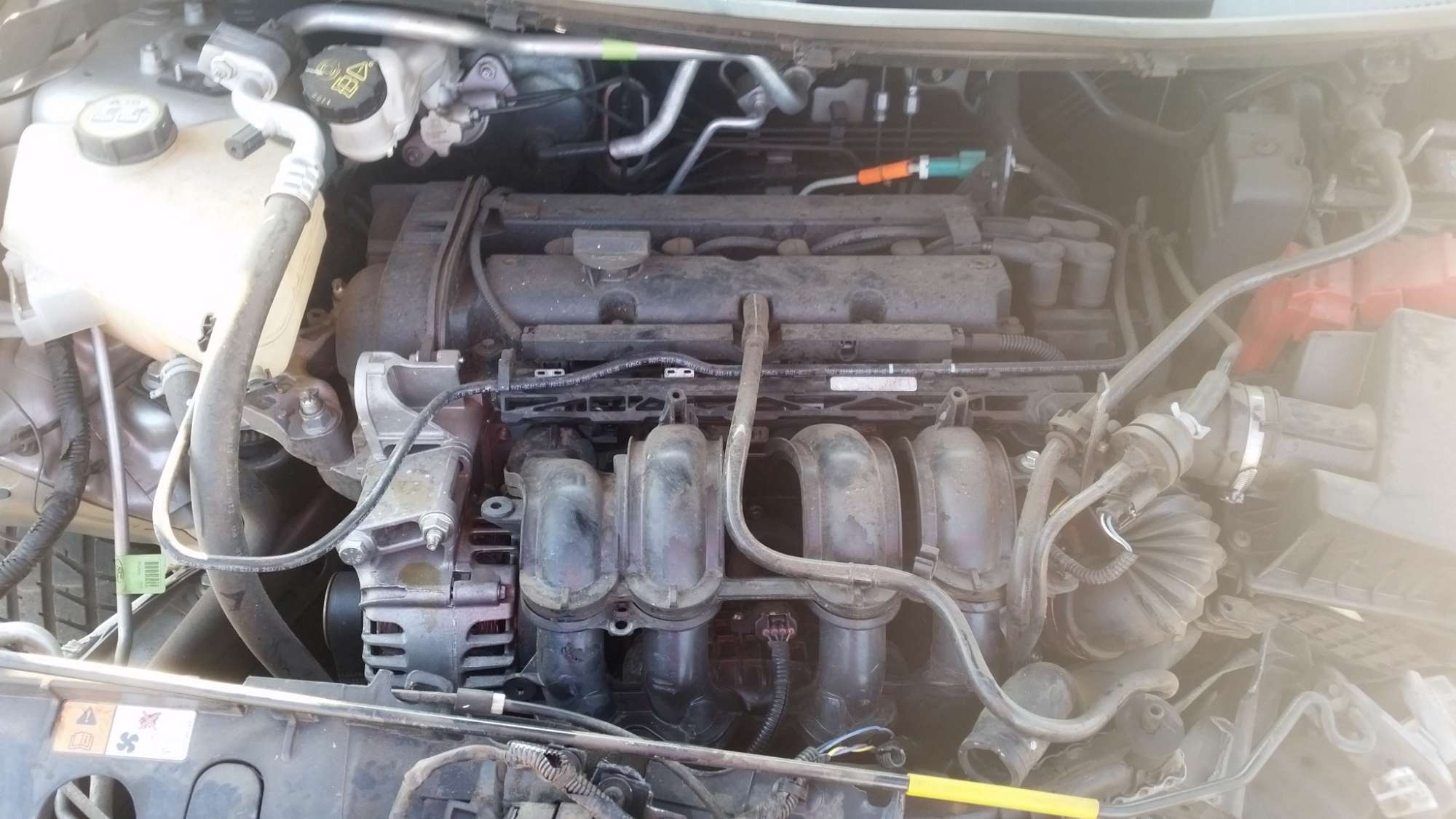Upgrade Your Ford Fiesta Engine for Better Fuel Economy and Power
Upgrade Your Ford Fiesta Engine for Better Fuel Economy and Power
Blog Article
Unlocking the Power of Engines: A Comprehensive Guide to Performance and Performance
Understanding the intricate technicians of engines is vital for both efficiency enthusiasts and day-to-day motorists. The solutions might redefine our strategy to engine performance and performance in methods that are both enlightening and vital.
Understanding Engine Basics
What constitutes the essential technicians of an engine? At its core, an engine is a machine created to transform gas into power via a collection of regulated surges or combustion procedures. The primary elements include the cylinder, piston, crankshaft, camshaft, and shutoffs. The cyndrical tube works as the chamber where burning occurs, while the piston relocates within the cyndrical tube to convert the power from combustion into linear motion (ford fiesta engine).
The crankshaft then transforms this straight movement into rotational energy, which ultimately powers the automobile. The camshaft manages the opening and closing of the shutoffs, regulating the consumption of air and fuel and the expulsion of exhaust gases. In addition, the engine counts on a carefully calibrated fuel-air mix, ignition system, and cooling down system to make sure optimum efficiency and performance.
Understanding engine essentials also entails acknowledging the significance of engine cycles, such as the four-stroke cycle, that includes intake, exhaust, compression, and power strokes. Each phase is vital in making sure the engine works smoothly and properly. Proficiency of these fundamental mechanics lays the groundwork for discovering a lot more complex engine characteristics and efficiency metrics, important for optimizing both power result and effectiveness.
Key Performance Metrics
Trick efficiency metrics are essential for assessing an engine's efficiency and power output, providing valuable insights for both makers and consumers. These metrics offer as criteria for engine performance, permitting educated decisions in production, style, and acquiring.
Among the main metrics is horse power, which evaluates the engine's capacity to perform job over time. Torque, determined in pound-feet, is another vital statistics that indicates the engine's rotational force, straight influencing acceleration and lugging ability. Gas performance, typically measured in miles per gallon (MPG) or litres per 100 kilometers (L/100km), evaluates exactly how efficiently the engine transforms gas into motion, impacting functional expenses and environmental factors to consider.
Additionally, thermal effectiveness procedures how well an engine transforms gas energy right into helpful work, exposing insights right into power losses largely via heat. Exhaust degrees, consisting of carbon dioxide and NOx, are likewise important, showing the engine's ecological effect and conformity with governing criteria.

Tuning Strategies for Effectiveness
Tuning techniques play a substantial function in boosting engine efficiency by maximizing performance metrics identified in earlier discussions (ford fiesta engine). Different approaches exist to tweak an engine, each contributing to boosted fuel economic climate and minimized emissions
One efficient method is readjusting the air-fuel proportion, guaranteeing the engine runs within the optimal burning regime. A leaner combination can enhance fuel effectiveness, however it has to be stabilized to stop misfires or engine knock. In addition, reprogramming the engine monitoring system can alter parameters such as ignition timing, which further boosts effectiveness while preserving power outcome.
Another essential strategy includes changing the intake and exhaust systems. Updating to high-performance air filters and exhaust headers can reduce back stress, helping with far better air movement. This permits the engine to take a breath more freely, causing enhanced combustion effectiveness.
Moreover, the execution of advanced tuning tools, like dyno screening, provides specific information that enables targeted why not find out more changes. Consistently keeping track of these performance metrics makes sure that tuning efforts generate the preferred efficiency results. Collectively, these methods not just boost engine efficiency however additionally add to lasting sustainability in engine procedures.
Upkeep for Optimal Efficiency
Routine engine upkeep is essential for achieving optimum efficiency and longevity. A well-maintained engine not only runs successfully yet likewise lessens the danger of expensive fixings and break downs. Key parts requiring normal attention consist of oil, filters, belts, and ignition system.
Altering the engine oil at recommended intervals is essential, as website here oil lubes relocating components and protects against overheating. Likewise, changing oil and air filters makes certain that contaminants do not harm engine function. Ignoring these components can cause reduced performance and possible engine damages.
Furthermore, checking and replacing used belts and hoses is essential to stop abrupt failures. Timing belts, specifically, ought to be replaced according to the manufacturer's schedule to avoid tragic engine damage.
Ignition system ought to also be inspected and replaced as essential, given that they play a crucial duty in ignition and gas effectiveness.
Future Patterns in Engine Modern Technology
Welcoming advancements in innovation, the future of engine design is positioned to reinvent efficiency and performance throughout numerous applications. Among the most considerable fads is the shift toward electrification. Hybrid and totally electric powertrains are becoming significantly mainstream, supplying lowered emissions and boosted fuel effectiveness. This transition is not merely a necessity but a fad driven by regulatory pressures and customer need for sustainable services.
Additionally, advancements in materials science are resulting in lighter, stronger elements that boost engine efficiency while reducing power intake. Advanced manufacturing methods, such as 3D printing, enable the development of complex geometries that improve air movement and thermal monitoring, therefore enhancing combustion processes.
In addition, the assimilation of expert system and artificial intelligence is readied to transform engine diagnostics and performance tuning. These technologies can examine large amounts of data in actual time, allowing anticipating upkeep and customized performance improvements.
Verdict
To conclude, unlocking the power of engines calls for a comprehensive understanding of their auto mechanics and performance metrics. Implementing efficient adjusting methods and adhering to normal have a peek at these guys maintenance techniques significantly improve engine capacities. As the vehicle landscape progresses, welcoming future fads in modern technology, consisting of electrification and advanced manufacturing, will certainly be vital for enhancing efficiency and performance. This thorough strategy not just benefits lovers but likewise adds to sustainable solutions in the world of vehicle design.
In addition, the engine counts on a meticulously calibrated fuel-air combination, ignition system, and cooling down system to ensure optimal efficiency and performance.
Understanding engine basics also includes recognizing the importance of engine cycles, such as the four-stroke cycle, which consists of intake, compression, power, and exhaust strokes. Proficiency of these essential mechanics lays the groundwork for checking out a lot more complicated engine dynamics and efficiency metrics, essential for optimizing both power outcome and performance.

Embracing innovations in modern technology, the future of engine layout is positioned to transform efficiency and effectiveness throughout numerous applications.
Report this page